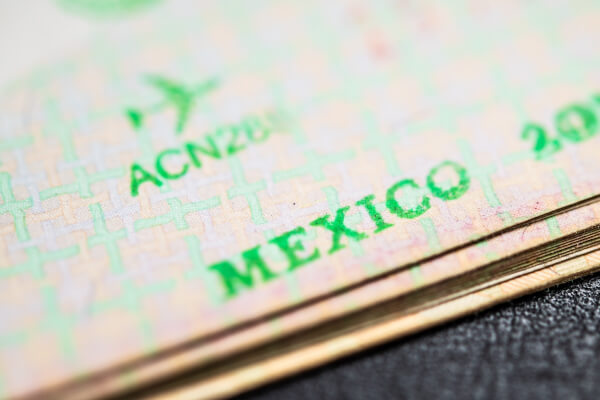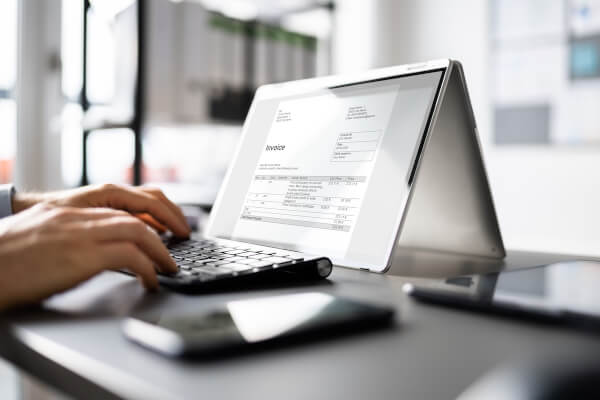How to Hire Independent Contractors in Mexico | Legal Guide & Best Practices
Learn how to hire and pay independent contractors in Mexico. This article also includes an FAQ and best practices about working with contractors in Mexico.

International trade is a complex business. For starters, logistical problems can make it difficult to transport an item from one country to another. Additionally, there may be legal issues around certain goods in particular countries. All in all, anything that can help to streamline the process across borders is something to celebrate.
Which is where Incoterms® come in.
In this guide to Incoterms®, you’ll learn about how this set of abbreviations can help to make international trade just that little bit easier.
| Table of contents: |
|---|
What is “Incoterms”? Well, as the name suggests, Incoterms® are a set of terms. Each of them is three letters long, and stands for a rule that helps everyone to make sense of an international shipment during its journey from source to destination.
Incoterms® date back to 1936, when the first set of rules was published by the International Chamber of Commerce (ICC) – the same body that looks after Incoterms® today. The usage of some trade terms had already existed for some time – but 1936 was the moment when a formal set of rules was introduced as a standard to be used internationally.
They’ve been regularly updated since then, in line with the changing nature of international trade. For instance, updates in 1953 and 1974 respectively acknowledged the prevalence of transportation by rail and air.¹
The most recent set of Incoterms® rules was published at the start of 2020. These days, there are 11 Incoterms® rules.²
Incoterms®, meaning “international commercial terms,” is a trademark of the ICC. The “in” is short for “international”, and the “co” is short for “commercial.”
The most important function of Incoterms® is to make it crystal clear who is responsible for what. The Incoterms® specify which parts of the shipping process are the responsibility of the buyer, and which of the seller. This includes both financial responsibility, and responsibility for risk.
For instance, if the EXW rule is used, it’s up to the buyer to handle most of the process, while the seller is involved minimally. The buyer will shoulder the costs and risks of the whole shipping process. With other rules, the buyer will have fewer responsibilities, and the seller more.
The widespread use of the Incoterms® rules, including in legal contracts, means that it’s easy to say who is responsible at each stage of the process, should there be any disagreements or problems.
Often, international trade involves paying money from one country to another. Though this isn’t directly covered by Incoterms®, it’s still something that every international salesperson will need to think about carefully.
Wise Business is well worth considering. It’ll let you send your money overseas at the real mid-market rate, and could be up to 19x cheaper than PayPal. That way, if anything does go wrong during the shipping process, you can be sure to keep any international bills to a minimum.

Incoterms® are used widely when agreements are put together between buyers and sellers in different countries. They will typically feature in the contract that they draw up to clarify the terms of the sale.
The required information is the relevant term – CIF, for example – followed by the relevant location, which might be the place of delivery or the place of destination. Then, you should additionally clarify which set of Incoterms® rules you’re using – for instance, the 2020 rules, if you want to be up to date.
Typically, the buyer will be responsible for some aspects of getting goods from one country to another, and the seller will be responsible for the other aspects. Incoterms® rules provide a framework for saying which aspects are which.
What aspects are we talking about? Incoterms® help define who takes on responsibility for:³
As already mentioned, if you use EXW then the buyer is responsible for all the above costs and responsibilities. At the other end of the scale, DDP gives the seller responsibility for almost everything until unloading at destination. Between these two extremes, the buyer and seller have varying levels of responsibility.
Do remember, simply using Incoterms® rules isn’t the same as drawing up a full contract. Here are some of the things that are not covered by Incoterms®:
More generally, there may be plenty of other conditions that are not covered by Incoterms®. They’re a great help in clarifying responsibilities, but there’s still the potential for other ambiguities.²
If you want to, that’s fine. You can even use older versions if you want. The key thing is that you clearly state what version of the rules you’re using, so there is no ambiguity there.²
No, you didn’t miss them – Incoterms® 2020 is the first update since 2010. In general the updates occur once a decade.⁴
There are two key groups within the eleven Incoterms® rules. Firstly, seven rules that can be used for any type of transport, and secondly, four that are specific to transport by sea or inland waterway.
Here are the rules that you can use regardless of how the goods are getting from A to B.² ³ ⁶
EXW – Ex works [place of delivery].* The seller makes the goods available, and the buyer takes on all the costs and risks.
FCA – Free carrier [place of delivery].* The seller gets the goods to a named carrier, after which the buyer takes on responsibility.
CPT – Carriage paid to [place of destination].* The seller is responsible for most of the transportation costs, but once the goods are handed over to the carrier, the risk is the buyer’s. The buyer is also responsible for insurance.
CIP – Carriage and insurance paid to [place of destination]. As above, but the seller is responsible for insurance.
DAP – Delivered at place [place of destination]. The seller is responsible for all the transportation costs and risks, but not the unloading of goods at their destination. Customs clearance is the buyer’s responsibility.
DPU – Delivered at place unloaded [place of destination]. As above, but the seller is also responsible for unloading at the destination.
DDP – Delivered duty paid [place of destination]. The seller is responsible for everything except unloading at the destination. This includes import customs and duties.
Please bear in mind that these are simplified explanations. You can find additional details in the ICC’s official publication.
The most noticeable change in the 2020 rules was DPU, which replaced DAT. Previously, DAT stood for “delivered at terminal” – but in fact, delivery doesn’t need to take place at a terminal, so they changed the name.
There are other changes as well, including to the details of FCA, and the levels of insurance coverage required.⁵
Here are the four specific shipping Incoterms® rules, not to be used for non-waterbound transportation.² ³ ⁶
FAS – Free alongside ship [port of loading].* The seller delivers the goods to the buyer’s ship, but doesn’t load them onto the ship. From that point on, the buyer assumes responsibility.
FOB – Free on board [port of loading].* As above, but the seller also loads the goods onto the buyer’s ship and sorts out export clearance.
CFR – Cost and freight [port of destination].* The seller pays for the goods to get to the destination port, but the risk is the buyer’s once the goods are loaded onto the ship.
CIF – Cost, insurance and freight [port of destination].* As above, but the seller pays for insurance.
These terms should only be used for sea freight that isn’t in containers, or for waterway transport inland. Otherwise, other terms will be appropriate. For instance, CPT should be used instead of CFR, and CIP instead of CIF.
The ICC itself is the place to go for further information on Incoterms® – you can get the official book from their site as well.
Good luck preparing your international shipment. It can be a complex process, but the Incoterms® rules are there to help.
Learn More:
DDU Incoterms®: What You Need to Know
Sources:
1.Incoterms® rules history - ICC
2. Know Your Incoterms | International Trade Administration
3.Wikipedia - Incoterms Allocations of risks to buyer/seller according to Incoterms 2020
4.Incoterms® 2020 - ICC
5.What are the key changes in Incoterms® 2020? - ICC
6.Shipping Solutions - The Beginner's Introduction to Incoterms
All sources last checked on April 16, 2020
*Please see terms of use and product availability for your region or visit Wise fees and pricing for the most up to date pricing and fee information.
This publication is provided for general information purposes and does not constitute legal, tax or other professional advice from Wise Payments Limited or its subsidiaries and its affiliates, and it is not intended as a substitute for obtaining advice from a financial advisor or any other professional.
We make no representations, warranties or guarantees, whether expressed or implied, that the content in the publication is accurate, complete or up to date.

Learn how to hire and pay independent contractors in Mexico. This article also includes an FAQ and best practices about working with contractors in Mexico.

Learn how to navigate the overseas worker recruitment. Discover legal requirements, sourcing strategies, visa compliance, and tips for international hiring.

Paying overseas vendors is common, but the hidden costs of B2B cross-border payments aren’t. Learn how to simplify international business payments today.

B2B payment processing doesn’t have to be hard. Learn how growing businesses can simplify cross-border transactions, streamline invoicing and get paid faster.

Discover strategies to enhance B2B payment security, reduce fraud risk, and protect cash flow using secure digital payment methods and automated workflows.

B2B payment automation helps small businesses save time and reduce costs. Read about how automation replaces manual tasks and boosts accuracy and cash flow.